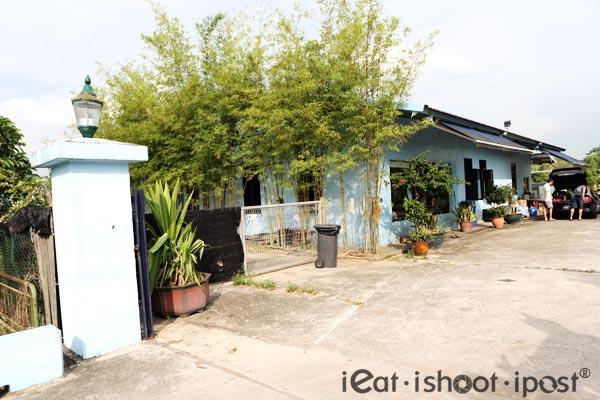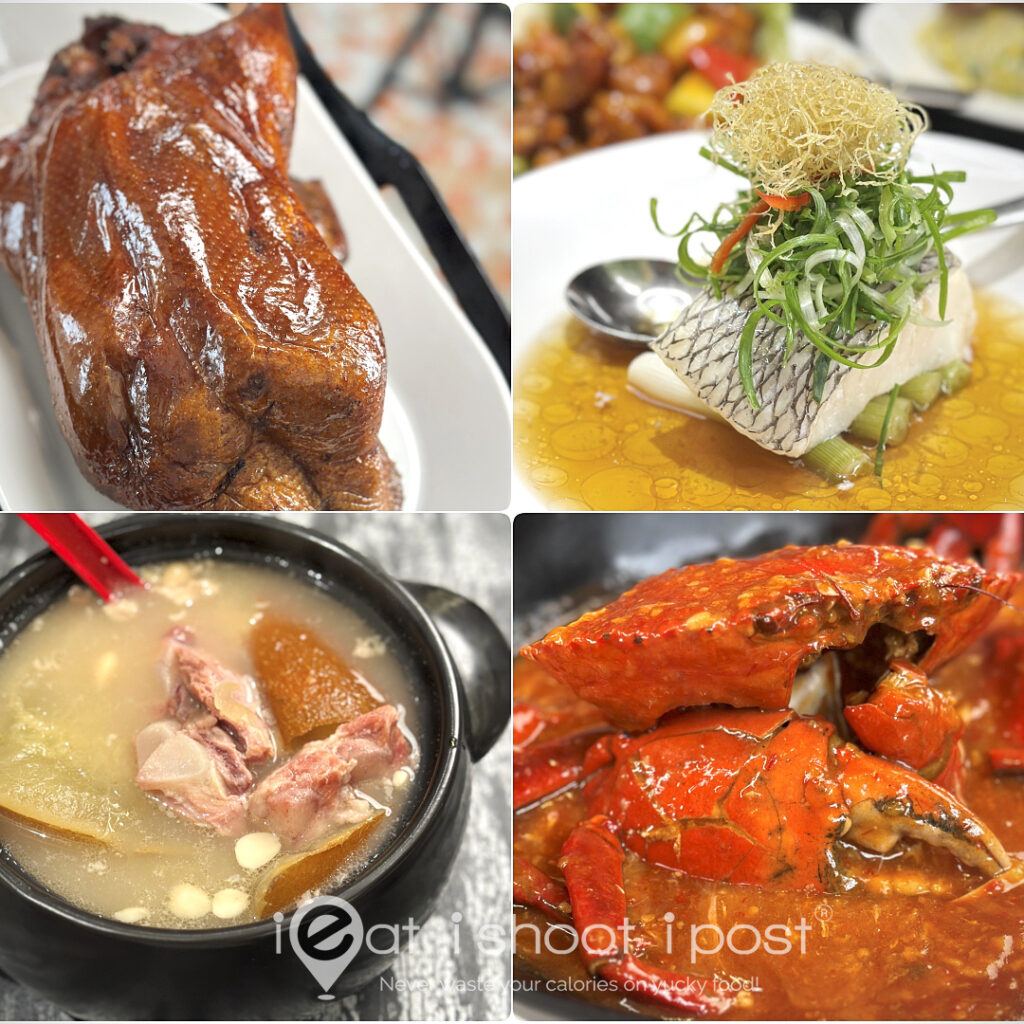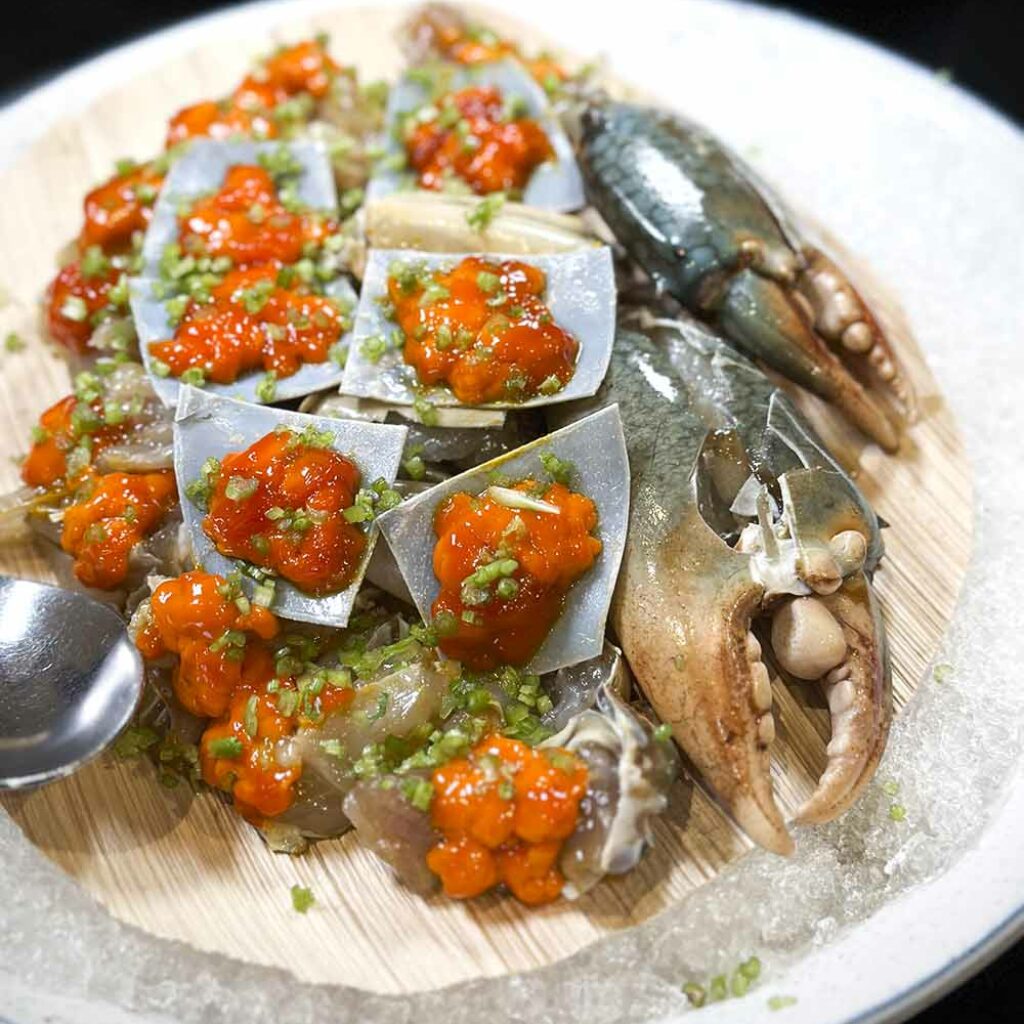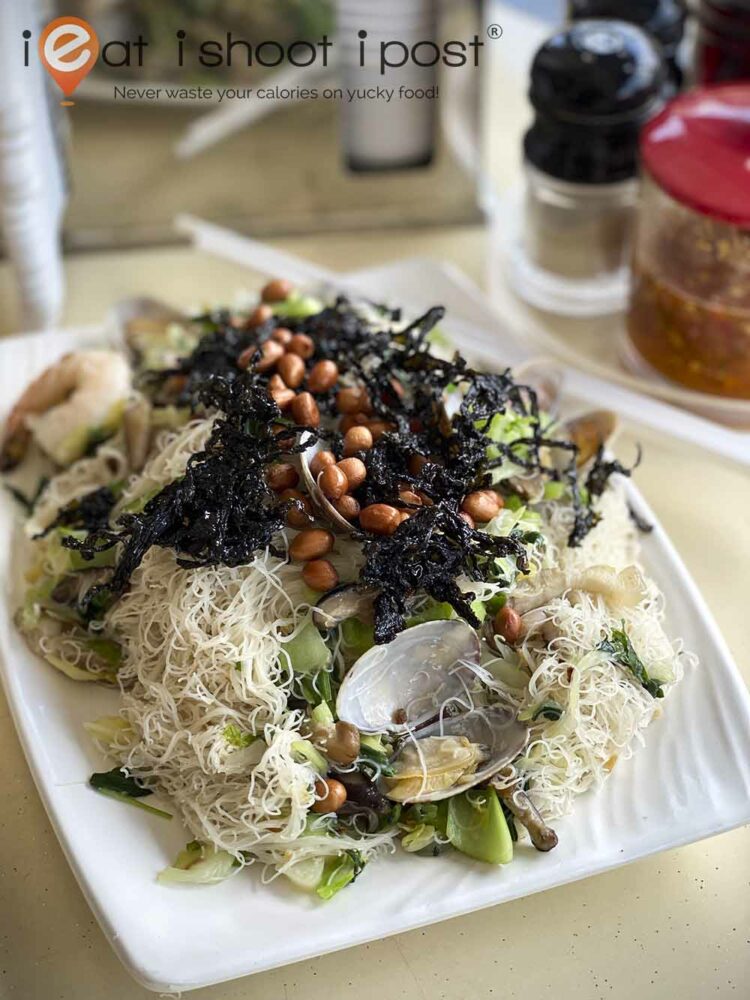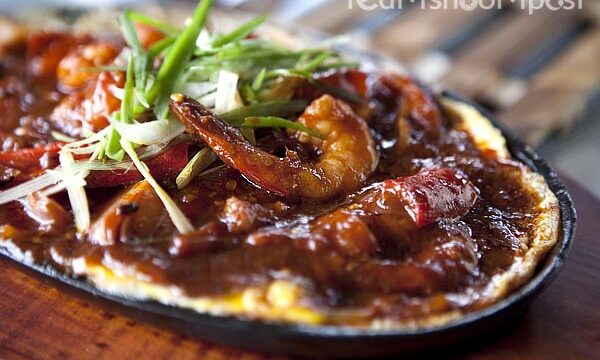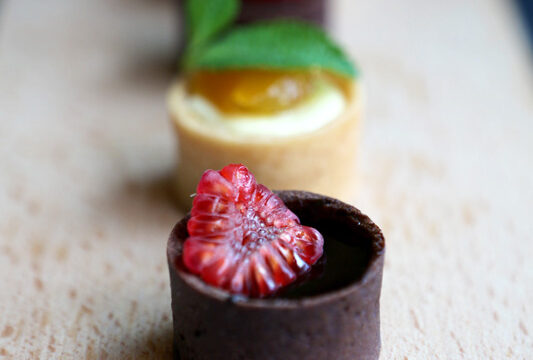This post is dedicated to my Papa
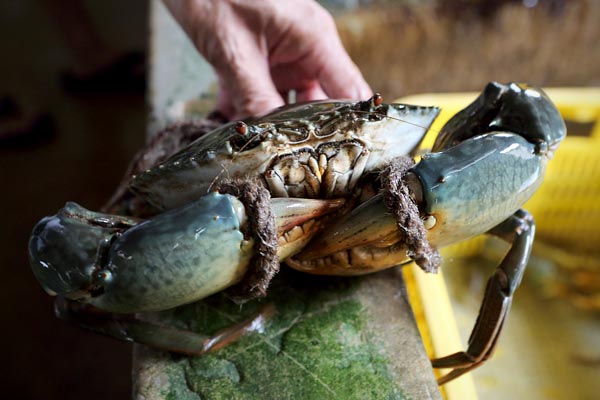
One of my fondest childhood memories is when the crabs that my father bought escaped from the pail and we had to spend a good part of the day looking into every corner of the house to find them! My Pa is a big fan of crabs but I can always remember him complaining that the crabs he bought turned out to be useless “Water” crabs with very little meat time and time again. This is why I dedicate this post to my dear old dad. I finally found out the secret to choosing crabs, Pa!
Crabs are getting more and more expensive, so it is imperative that everyone has a little knowledge about how to choose good ones so that we won’t end up spending all those hard earned dollars, only to grumble and curse that the “solid” looking crabs turned out to be scrawny little things underneath that deceptive armor yet again!
The Life Cycle of the Crab
The crux to picking a good crab lies in a basic understanding of the life cycle of the crustacean. This really is the key that unravels the mystery to why some crabs turn out to be disappointments even when they are so active and solid looking when you pick them out of the tank.
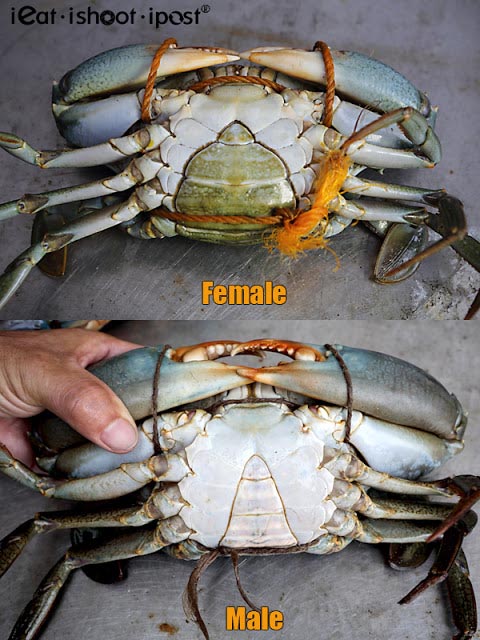
The crab starts off life as a little egg which hatches and gives rise to a zoea which soon turns into a megalopa which looks a lot like a mini lobster. Crabs are crustaceans, just like a lobsters and prawns, and so they share the same body structure. The head and thorax of a crab are dominant whiles the tail is shrunken down into a small abdominal plate which gets tucked under the crab’s body. That is the part of the crab we usually look at to determine if it is a male or female.
Very soon the crab takes on a more familiar form and continues to grow by molting. The shell of the crab does not grow, so as the crab reaches the limit of its growth, it sheds its old shell to reveal a new “soft shell” underneath. It then pumps itself full of water and the new shell swells up like a balloon up to about 20% bigger than before and then it starts to harden. Once the new shell hardens, it would look very much like any crab on the outside, but the inside of the crab contains a lot of water and little meat. The crab then eats and fills its new shell with flesh. Hence, the key to choosing a good, meaty crab is to be able to pick one that is nearing the end of its current cycle rather than the beginning!
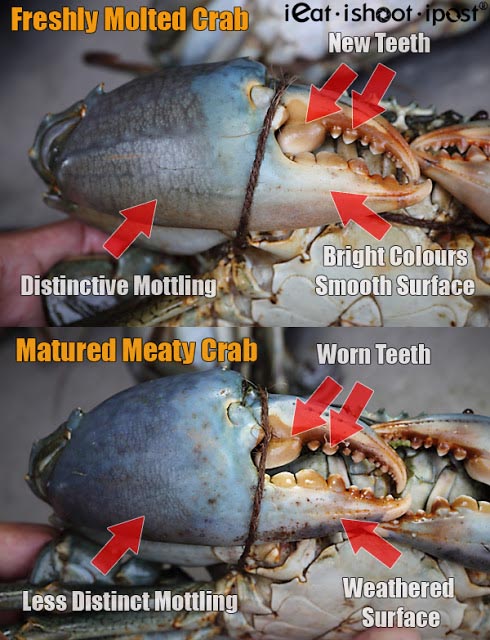
The trick then is to be able to tell the difference between an old shell and a new shell. Here are a few things to look for:
1. Colour
The new shell will have a nice shiny surface with bright colours and a distinct mottling pattern on its claw whereas the older shell will be duller and more weathered with pockmarks and scratches.
2 Wear
The large molar of the claw is a telling sign of whether the crab has been eating or not. The newly molted crab would have a molar that is well rounded while the old shell crab has a flattened molar. The smaller teeth in the new shell crab would be chiseled and sharp while that on the old shell crab would have been ground down and rounded. Mud crabs use their right claw to crush shellfish and their left to slash into flesh, so the most telling sign that the crab has been busy eating is to look at the molar of the larger right claw.
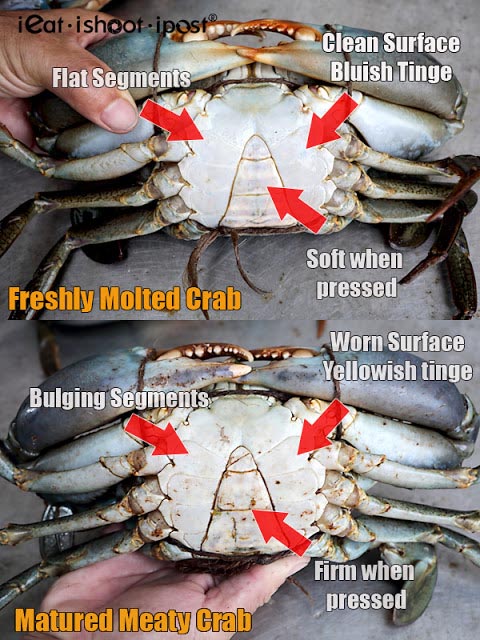
Next we look at the underside of the crab.
3. Underside
The underbelly of the new shell crab would look slightly blue and be quite flat whereas the older shell crab would look more yellowish and the segments would have a tell tale bulge like Arnold Schwarzenegger’s six pack.
If you are able to depress the abdominal plate, the crab will not be full of meat
4. Abdominal plate
One of the most reliable signs that the crab is full of meat is to press on the abdominal plate as shown on the video. The empty crab would have a lot of give while the meaty crab would have very little or hardly any give at all. This sign is the most reliable because a crab might have all the signs of a worn out shell, but if it is kept for too long without any food, it would also start using up its energy stores and the flesh will start to atrophy. Once the flesh starts to shrink, the way to tell is by pressing on the abdominal flap as well as the segments.
Where you buy the crab is important
This tip really should be right at the top of the post. If you buy your crabs at the supermarket, than your chances of getting a good crab is slimmer than if you buy it from a seafood specialist where there is a quick turnover of crabs. One of the things you should never do is to buy crabs that are stored in water. When crabs first arrive into Singapore, they are first refreshed by putting them into brackish water for 6 hours to get their gills wet, then they are stored out of the water in order to limit their activity so that they don’t use up their energy stores. Subsequently, the crabs are put into water for only 2 hours a day. Crabs can survive out of water as long as their gills remain wet. If crabs are kept in a water tank, they tend to be very active and so they will use up their energy stores quickly and their flesh will start to shrink. So always buy crabs from a good supplier who stores its crab out of the water where they stay dormant!
Acknowledgments
Many thanks to Allan Teo and Mr Pang from Huat Kee Crab Suppliers for their contribution to this article.
Huat Kee Crab Supplier is no longer in operation
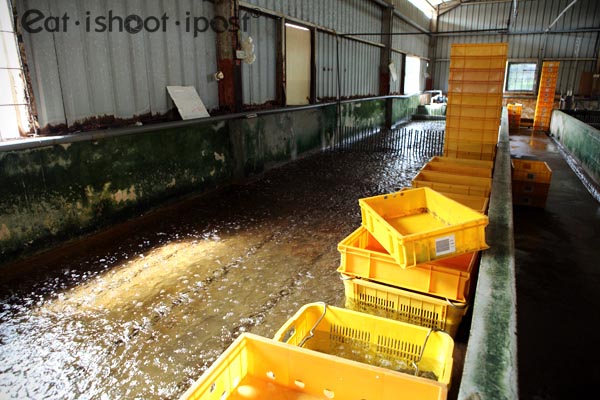
Huat Kee Crab Suppliers operates the only crab fattening facility in Singapore. It is located in Lim Chu Kang and the facility has tanks where crabs can be fed to fatten them up for the market. They are one of the major crab importers in Singapore and supply the major restaurants. However, they also welcome casual buyers who visit the farm to pick up a few crabs. They share this information as an assurance that visitors to the farm will always walk away with reasonably good crabs!
Please note:
If you are planning to buy crabs from Huat Kee, it is advisable to ring up first to find out if there is a current shipment. Their turnover is very fast, so there might not be crabs for sale if you just turn up ad hoc.
